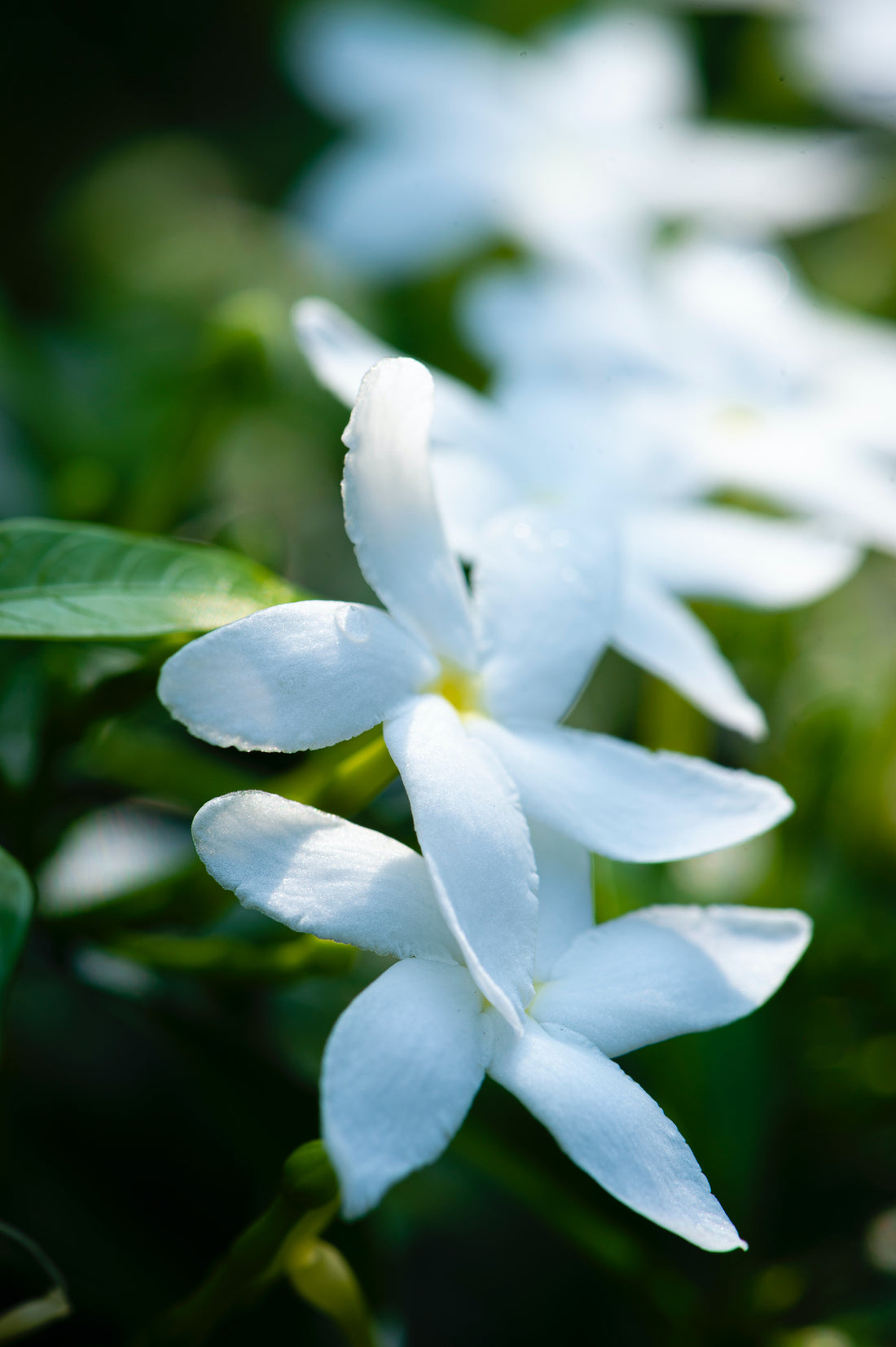I’ve had an interesting new affinity for Jasmine, specifically Jasmine sambac but also J. grandiflorum so much so that I’ve felt compelled to write about it here as it's become a big part of my work lately.
Jasmine has come up as a preferred ingredient for clients in many perfumes this spring, so I’ve been working with this material more than usual, observing and experiencing its qualities on myself and others first hand.
While I always appreciated the fresh smell of Jasmine blooming, I often found the absolute a little too intense and floral for me as on its own. I do use it in blends judiciously, such as Home By Curfew and it truly makes the fragrance.
After working so closely with this material I’ve now been inspired to make a solid soliflore perfume of Jasmine, as homage, in a special beeswax stash I’ve saved for special projects such as this. It’s unfiltered, absolutely beautiful, local, and going to pair exceptionally well in this project.
Whenever I’m drawn to or inspired by a particular plant or botanical ingredient, it’s because I likely need that plant medicine in some way either energetically or medicinally, and that’s been true in this case for sure. It connects deeply to my current personal healing journey, helping me with anxiety, insomnia, and feeling more in my body, more connected. It helps heal the heart, and spirit in profound ways over time.
I’ve now been doing a deep dive one on one exploration of Jasmine since last March and still going strong. I usually work extensively one on one with a plant when it calls for me to do so, which can range from a few weeks to months. There’s a lot you can get from sitting or working with the plant over time in a way that you can’t get anywhere else and I’m then able to bring that into my work in new ways both medicinally and in perfumery and magic. I'll write more extensively on the chemistry and qualities of this flower as I have time, but for now here's a very brief synopsis on jasmine's physiological and spiritual properties.
Clinically, the aroma of Jasmine has been studied extensively and found to directly affect the GABA receptors in our brain. It’s often used to help alleviate anxiety, depression, fatigue, aggression, as well as help with insomnia, lowers blood pressure, and it may also be used to increase libido.
Jasmine is used in energetic work to facilitate healing, transitions of life, as well as of trauma, abuse, and shock. Jasmine helps balance emotions, energy, and facilitates in grounding and being present in the body.
Spiritual & Magical: Jasmine has a rich, ancient, magical history. Its spiritual properties are widely known and often used to facilitate finding true love, spiritual love, trust, in divination, balance, spiritual connection with others, promotes peace, harmony, success, as well as in doing shadow work, self reflection and care, healing, spiritual alignment, self love, loving communication, reconciliation, and promotes favored results and strokes of good fortune.
Element: Water
Quality: Feminine, Receptive
Astrology: The Moon
When working with lunar magic, Jasmine is one of the favored tributes to the Moon, which astrologically rules Monday.
Jasmine can be added to diffusers, warmers, added to a carrier oil and applied to skin as a massage or body oil. I like adding a few drops of jasmine absolute in 4 oz to a blend of (2 p) sweet almond, (1 p) apricot kernel oil, and (1p) shea nut oil as an after shower oil. So luxurious, and very calming.
Use the dried or fresh flowers in tea, bath soaks, and washes, and the absolute in enchanted perfumes, charms, spells, and manifestation work. Even better, make your own jasmine infused enfleurage if you have access to them for extra potency and magic.
You may also extract the flowers into alcohol, or glycerine (as a glycerite), but the enfleurage will capture much more of the aroma molecules. These extracts can be used with any of the above, and as bases in body products, perfumes, and magical blends.

